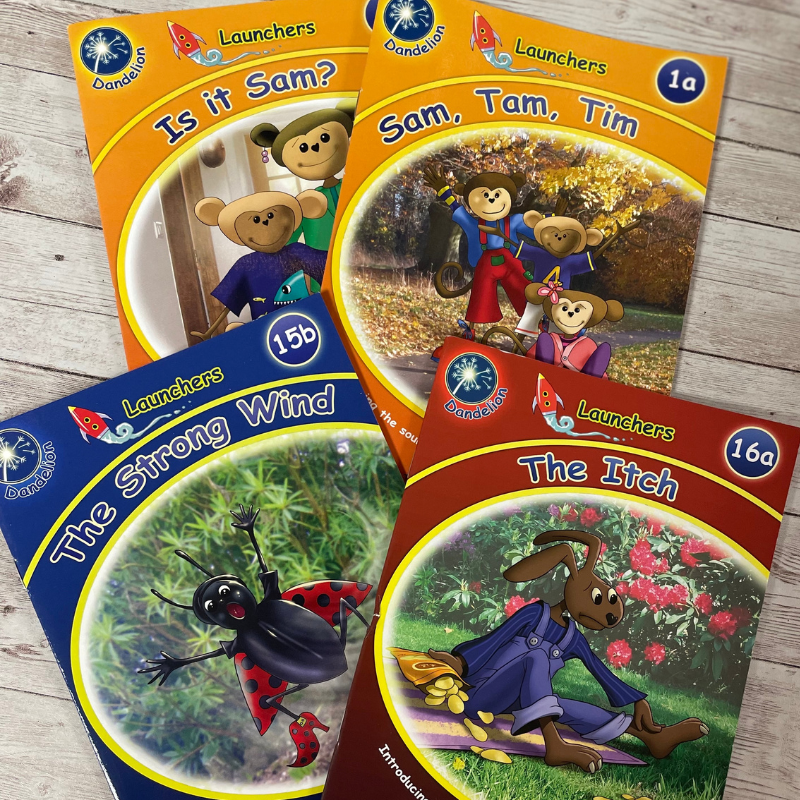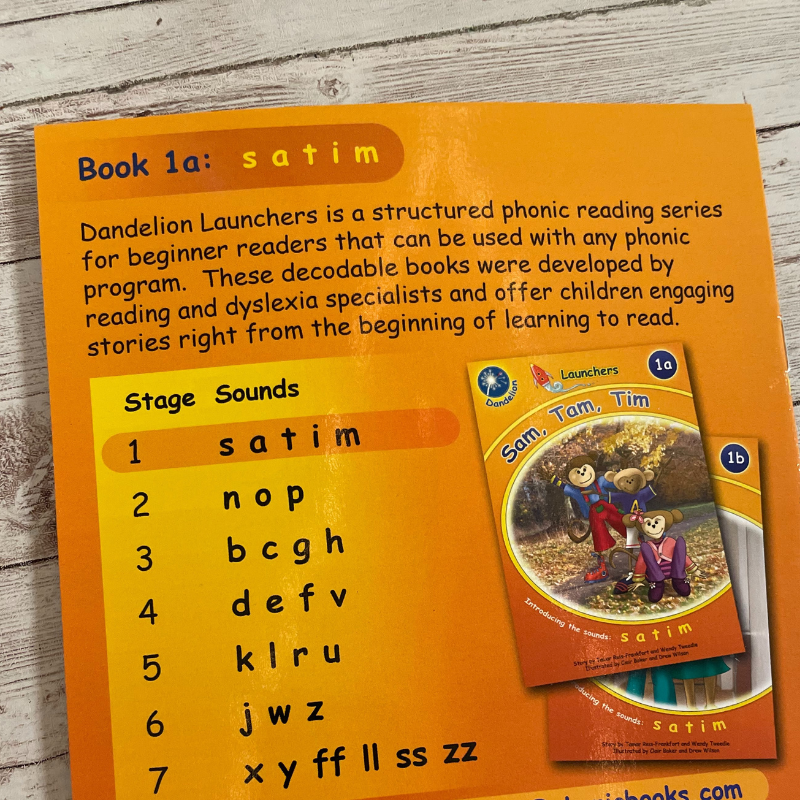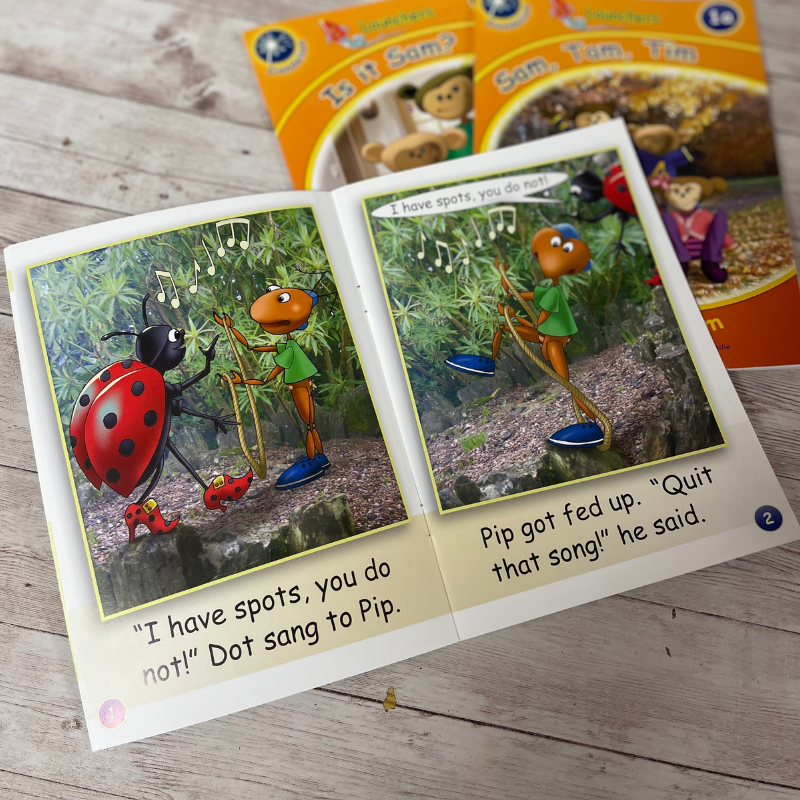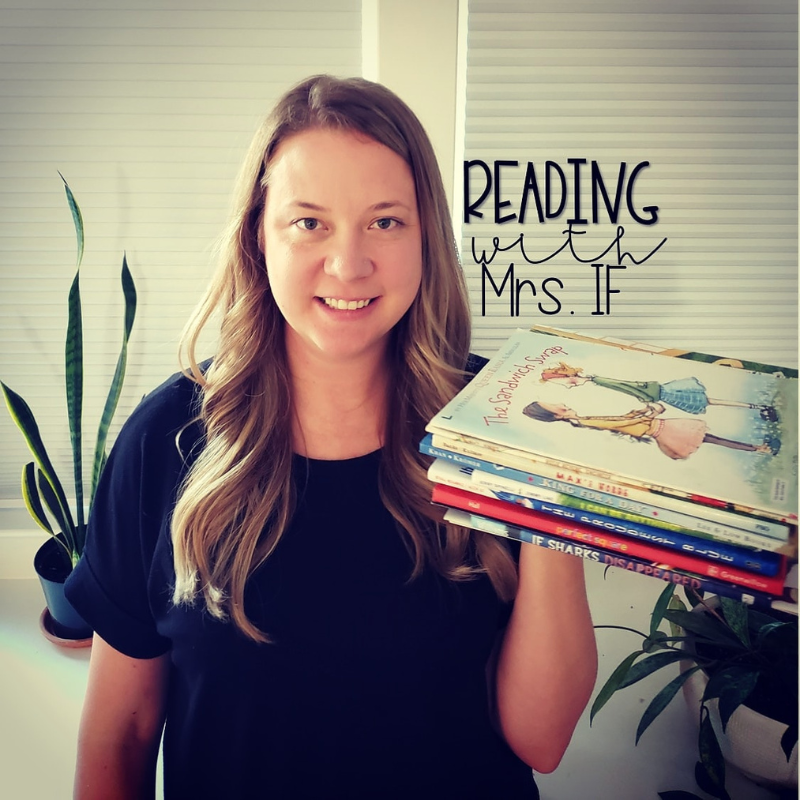

BLOGS > SEPTEMBER 26, 2023
BY HANNAH IRION-FRAKE

Join Hannah Irion-Frake for an engaging presentation designed to help you incorporate decodable texts into your elementary classroom and to help all students become successful readers.
One essential component of early literacy instruction is the development of the alphabetic principle, the understanding that letters and letter patterns represent the speech sounds in our language. As young students learn to read, they are doing the hard work of connecting speech sounds in their language to the print on the page. One tool I use to help students achieve this skill is the use of decodable texts.

What are decodable texts?
Decodable texts can be defined as content for beginning readers that has been controlled to only include the phoneme-grapheme correspondences and high-frequency words students have been taught through instruction. In other words, when reading a decodable text, students will only encounter words they have the skill set to sound out and read on their own.
From this definition, we can see how connected the decodability of a text is to the young reader. A text is only decodable to the extent that the student has learned the phoneme-grapheme correspondences they will find in that text. Furthermore, what is considered decodable for a student will change as they learn new phoneme-grapheme correspondences through phonics instruction. Any text can be a decodable text, if students have the skill set and phonics knowledge to read the words.
How do I know what a student can decode?
To understand what phoneme-grapheme correspondences and high-frequency words your students are ready to encounter in decodable text, it is best to use a scope and sequence as part of your phonics curriculum. A phonics scope and sequence organizes the order of phonics skills taught to students and acts as a road map for patterns learned and patterns to come. From my teaching experience, I know there is not one perfect scope and sequence – but I do know what makes a good one! Look for a progression of skills from easy to more complex.

How are decodable texts different from other types of texts?
Decodable texts are different than other kinds of texts you might find in an elementary classroom. Unlike predictable texts and leveled readers, decodable texts do not include unknown phonics patterns or unfamiliar high-frequency words. Of these three types, decodable text is best suited for our beginning readers.
Decodable texts also differ from literature and nonfiction texts that feature robust vocabulary, complex syntax, and abstract ideas. Every classroom should include high-quality fiction and nonfiction texts to help build background knowledge, introduce new vocabulary, and expose students to advanced sentence structure and various genres. These types of books are ideal for read alouds if your students do not yet have the phonics knowledge to read them independently.
I encourage teachers to think of decodable texts as an instructional tool to support beginning readers. They provide students with practice in segmenting and blending words in an authentic context as they move towards automaticity and fluency in their decoding skills. Decodable text allows students to practice the hard work of segmenting, blending, and decoding words, which helps them develop proficiency with phoneme-grapheme correspondences.
How do you use decodable texts?
Decodable text should be an essential part of each phonics lesson. When students read decodable text, they are practicing their skills in a controlled, but authentic context. It is a chance for students to use what they’ve learned about phoneme-grapheme correspondences in a way that prepares them for future reading.
Decodable texts are often the final step in a good phonics lesson plan. I use them after students have had explicit instruction and opportunities to practice reading and writing the target phonics pattern in words and sentences. You can find a free phonics lesson planning template here.
Before asking students to read a decodable text, I always prepare my students by having them highlight words in the text that have the target phonics pattern. Then, I ask them to read the highlighted words. I also teach or review high-frequency words they will encounter in the text. On future re-reads, I take away these scaffolds and have students read a blank copy of the decodable text.
If students make mistakes while reading, I prompt them to fix their errors in ways that keep their attention focused on the words. If a student is struggling to read a word, use prompts that help them apply their phonics knowledge to segment and blend the word. Use phrases like, “say all the sounds” or “sound it out”. Do not use prompts that draw attention away from the print, and avoid prompts that ask students to look at the picture or consider what would make sense in the story. Guessing is not a decoding strategy.

Aren’t decodables boring?
I’ve heard some people say decodable texts are boring to read. This may be true for fluent adult readers, but we must remember the purpose of using decodable texts as an instructional tool – they are not the end goal of instruction, but rather a means to an end. To a young, novice reader, who is just learning letters and sounds, they are a gateway. They provide a safe place for beginning readers to successfully read familiar phoneme-grapheme correspondences, which builds confidence in our young readers. They give our students the opportunity to do the hard work of learning to read. Decodable texts are an essential part of a good literacy curriculum.
If you are ready to encourage students with decodable texts, check out these on Titlewave.

Hannah Irion-Frake
Third Grade Teacher
Hannah Irion-Frake is a third-grade teacher in Central Pennsylvania with degrees in Elementary Education, Reading, and Curriculum & Instruction. She is a self-proclaimed literacy nerd. Hannah shares passionately about reading at www.readingwithmrsif.com and on Instagram @readingwithmrsif.
An Author Interview with Drew Daywalt
June 27, 2025
Drew Daywalt, award-winning author of the best-selling The Day the Crayons Quit series, is about to release his second middle grade book with illustrator Mike Lowery, No Sam! and the Meow of Deception. The title continues the hilarious adventures of Sam...
Read more
An Author Interview with Adam Wallenta and Makana Wallenta
June 27, 2025
Get ready to rock the galaxy with the first volume of Punk Taco – a wildly imaginative, music-fueled sci-fi adventure from father-son duo Adam and Makana Wallenta. Created when Makana was just five years old, this award-winning graphic novel now debuts...
Read more
An Author Interview with Lisa Manuzak Wiley
June 27, 2025
A bewitching new graphic novel series is arriving this fall!Author-illustrator Lisa Manuzak Wiley, who grew up in Hawaii, blends cozy fantasy, sisterhood, and tropical charm in a heartfelt homage to her roots: The Witches of Pepperwood Bay Vol. 1. Lisa...
Read more
What We're Reading – Books to Add to Your TBR List
June 4, 2025
As a Follett Content Outside Sales Consultant, I’m not only an avid reader, but also a passionate book reviewer! I’ve curated my top 10 book picks that are perfect for adding to your To Be Read (TBR) list. These titles...
Read more
Author Joseph Koszary on the Changes Made to the International Baccalaureate Extended Essay
May 22, 2025
As someone who’s served as an extended essay coordinator, examiner, and supervisor, I’ve grown deeply familiar with the previous incarnation of the extended essay (EE). Like many of you, years of accumulated experience have made supporting students through the process...
Read more
Celebrate Literacy All Year Long: Host an Online Book eFair!
May 12, 2025
Reading and literacy are essential parts of our lives, and there are numerous events throughout the year dedicated to celebrating and promoting these important skills. Hosting a Follett Book eFair is a fantastic way to engage your school community, share the...
Read more